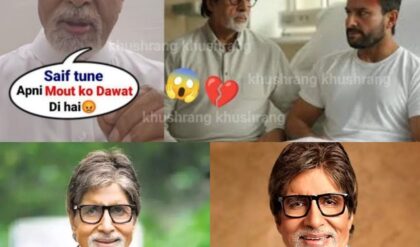Swades played a significant role in articulating the contours of citizenship. Two decades later, the evolving cinematic landscape has added new dimensions to its theme.

Still from Swades Photo: IMDB
During an event celebrating the enrolment of new students in a village school, an NRI NASA scientist hands out books to the students. Then, upon the insistence of the village headmen, he sits down and answers questions about his life in America. The camera captures him as part of the gathering, surrounded by curious visitors. He is asked about infrastructure, education, farming methods and the economy. When his answers start seeming like praise to the headmen, one of them immediately pivots to culture, much to the chagrin of the scientist. This obnoxious man starts lecturing him on the superiority of Indian culture and tradition, which makes India great. At this point the camera captures the silence of the scientist in a close-up of his face. When probed again by a different headman, he replies, with the camera now slightly below his eyeline,
“Main nahin maanta humaara desh duniya ka sabse mahaan desh hai”
The crowd is stunned by the bluntness of the answer. The scientist waits for a second for both on-screen and off-screen crowds to digest the enormity of this statement. This sequence from Swades (2004) is often quoted as an example of the power of popular cinema to stick its head out in defiance of accepted logics. As time goes on, and this sequence and screenshots from it circulate on the internet, additional meanings about the film unfold like layers of time. These layers appear to us as comments on social media posts: “Could a film say this in 2024? Why did this film flop? This is one of SRK’s best performances; No wonder he doesn’t experiment anymore, his fans desert him whenever he does unconventional films.” While the dominant discussion revolves around Shahrukh Khan’s performance in the film, it is crucial to look at the broader relationship the film forges between politics, aesthetics, the citizen and the State.
Swades begins in Washington D.C., where we zoom in on this place through satellite imagery, supported by electronic music that accompanies visuals of a presentation by Mohan Bhargav (Shahrukh Khan), an Indian space scientist based in the United States. Post the presentation, Mohan goes to his spacious apartment overlooking the Washington Monument as we hear his answering machine, “Your request for citizenship has been accepted.” But he is not happy, he yearns for the company of the mother-like figure Kaveri amma (Kishori Ballal) who he has left back in India. From here begins Mohan’s story of becoming a Nehruvian-Gandhian figure in the 21st century.
Mohan travels to India and realizes that Kaveri has moved from Delhi to a small village named Charanpur. He, a scientist from NASA, cannot find this small village on a physical map. He asks for help from the film’s female lead, Gita (Gayatri Joshi), who deliberately misleads him so that he does not take Kaveri away, a mother-figure to her too. He chooses to rent a caravan for the road trip, a very unusual choice to travel to a village. After some timely help by a singer-hitchhiker, he finally reaches Charanpur. Through Mohan’s character, the film reveals to us—the urban audience—the infrastructural challenges that India faces. Education, electricity, and connectivity are underlined as three clear policy challenges for the Indian state. In addition to this, the core socio-economic problem the film identifies is caste, upon which hinges Mohan’s ultimate character growth, especially after he witnesses how dire the situation really is. He visits a man who changed his birth-profession from weaving to farming, resulting in his ostracization in the village and his subsequent state of destitution. As he travels back home, he sees a young child selling water on a train station. Seeing this child, the exclusively bottled water-drinking Mohan buys and drinks unfiltered water. This sequence almost directly leads him to confront the village elders in the event described in the beginning.

Swades At 20| Why Fans Are Still Asleep On Shah Rukh Khan’s Warmest Love Story
He, thus, completes his journey from a Westernized elite to an informed Indian citizen—concerned about the lack of infrastructure, socio-economic disparities, and state inaction. While in his monologue to the elders he implicates himself in this system, his position is clearly that of a reformer. The “We” embedded within the Preamble to the Constitution, and in the film’s title, is called into question here. Can the “we” make the “people” work towards a common goal? He cannot bear to see that while he works with advanced satellites, the villages in his country do not even have electricity. This sets up his climactic arc, which culminates in him starting a turbine to generate electricity using the resources that the village already has. This kind of citizen-action drive is reminiscent of the politics that non-governmental organizations often engage in. Instead of forcing the state to bend to its demands, they encourage that citizens take matters into their own hands. The title Swades, while making sure to tip its hat to the swadeshi movement with the story of the weaver-turned-farmer, rejigs the meaning of a ‘good citizen’ to suit the realities of early 2000s India. A new kind of developmentalist national project is dreamt of, where the state takes a backseat and lets the Westernized, educated, liberal elite take over the reformation project.
The effects of this orientation are not just limited to thematic or narrative choices. It is also reflected in the aesthetic choices the film makes. The film tries to contain the excesses of popular Hindi cinema, where Shahrukh Khan, arguably its biggest star, is stripped of his usual markers of stardom and presented as a ‘normal’ man. The film aims for realism consistently, adding to the discourse about the need to elevate popular Hindi cinema to address the “real” issues of India. It is not entirely surprising, therefore, that the film gained a lot of traction on television over the years, where such content was already encouraged by the state through its own programming. It sparingly uses the affordances of popular cinema, most effectively with the songs, and especially a deeply political song such as “Ye Tara Woh Tara”. The screening of a popular Hindi film Yaadon Ki Baaraat (1973) highlights that even the act of watching films together is marked by caste. But once the electricity goes, Shahrukh spreads his arms, tells everyone to look at the night sky, and dances to deliver the message of solidarity and fraternity.

Still from Jawan Photo: IMDB
Fast forward twenty years, and Swades feels like a film from a quieter time. The performance of citizenship in the film seems like an aspiration, an ideal to strive towards. There seems no need for a sweeping, populist politics. In the present, however, citizenship is much more an existential question, which demands a different response, something akin to the spark of “Ye Tara Woh Tara”. Fortunately, we did get it in 2023. Jawan signals the return of a combative relationship with the state, where a superstar vigilante urges people to hold the government to account. Instead of a sit-down session with villagers, he thunders on film, television and social media throughout the country by breaking the fourth wall and urging people to vote responsibly. Triumphantly rejecting realism, Jawan revels in the idea of the collective through a singing, dancing, political fan. This vigilante is not the Westernized, educated elite, but the son of a mother hanged for a crime she did not commit, and raised in a women’s prison. His consciousness and those of his partners in vigilantism is shaped by extreme violence and injustice. In this film, the villain is the capitalist who, colluding with political parties, wishes to end citizen protests and make India seem ripe for exploitation to foreign investors. In such a scenario, a different “We” is constituted within the “people”. The “We” that resists, that questions, and most importantly, the “We” that dances against the tune of those in power.
Piyush Chhabra is a Ph.D Scholar of Cinema Studies at the School of Arts and Aesthetics, Jawaharlal Nehru University, New Delhi. He works on the entanglements between law and different media forms.





